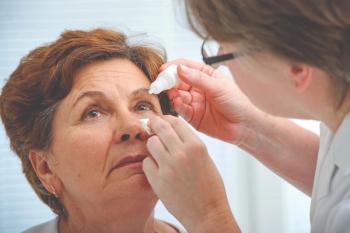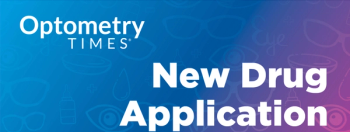
Personalized solutions enhance presbyopia management
A pharmaceutical approach (pilocarpine hydrochloride ophthalmic solution 1.25% ) to improving near vision can be used with other technology, benefiting a wide variety of patients.
When it comes to discussing presbyopia with patients, the devil—as they say—is in the details. It is important that we cater our conversations to the patient in our chair and that individual’s visual needs.
Through these conversations, we need to learn how our patients use their vision and to tailor our solutions to fit their lifestyle.
In general, I start my consultation by telling patients that they have presbyopia, which essentially means the inability to focus on things up close. I say that, with age, the lens becomes less flexible, and I let them know that everyone eventually develops presbyopia.
Related:
The good news is that the condition is normal and expected; the challenge is in how best to treat it to improve functional near vision. I inform them that the first option is glasses, the second is contact lenses, and the third is a newly available, FDA-approved eye drop that improves near vision (pilocarpine hydrochloride ophthalmic solution 1.25% [Vuity; Allergan]).
Dig into the details
The tools we use to help patients see better up close will depend on the details: age, lifestyle, and desires or visual goals. Following are some examples.
Emmetrope facing near vision issues
An emmetropic woman, age 50 years, is beginning to struggle with near vision. I discuss the 3 options, followed by a conversation about each. At this stage, if the patient is interested in trying pilocarpine hydrochloride ophthalmic solution 1.25%, we instill the drops in the office. We wait 15 minutes and measure the visual response. We do not measure vision on the eye chart; instead, we have patients pull out their cell phone and read their text messages. Virtually everyone will be able to see their phone better.
Related:
The expectation conversation is crucial. I always tell patients the presbyopia-correcting drops will make your near vision better, but we do not know how much better.
I say, “Over the next several minutes we will see how much the drop improves your near vision. Then you can make the determination about whether you’d like to proceed with the drops.”
We also set the expectation that over the next week of use, the vision will likely improve as well.
Contact lenses have not helped
A woman, age 52 years, who is a +2.25 add has tried numerous brands of contact lenses. Although she is highly motivated, contact lenses have not worked well for her, and she has resorted to wearing glasses. She was eager to try the drops, so we instilled them in the office.
When she looked at her phone, she said it was slightly better. I knew it would not be dramatically better due to the extent of her presbyopia. I let her know the real test will be how she functions at her office, where she works on a desktop computer.
I said, “I am hoping it provides more independence from glasses.”
Related:
She went back to her office, and my staff was instructed to follow up with her once she was back in her office at her desk.
She reported that she is very happy because she can see her computer screen much better, and she elected to proceed with a prescription.
Often, it is not what patients can see in the examination room that is important to them—it is how they function in their daily lives.
We may have thought an individual with advanced presbyopia was not the ideal candidate for pharmaceutical treatments for presbyopia.
Yet when their world is sitting in front of a computer that is 18 to 22 inches away from them and they are dependent on glasses, the drop can give them some independence.
Irregular corneas
Patients with irregular corneas can have success with the drop. Presbyopic patients who have undergone radial keratotomy are often now wearing specialty lenses and are highly motivated to get out of their glasses.
In my experience, these are individuals who are extremely happy with the drop option. One patient with mild epithelial basement membrane dystrophy is using the drop 15 minutes before putting on his specialty contact lenses.
Related:
I recently saw a keratoconic patient, age 48 years, with a penetrating keratoplasty. He has now developed presbyopia and was panicked because he thought his inability to see up close meant the graft was rejecting.
This is another patient using the presbyopia drop along with his contact lenses who is very happy with his near vision.
Pharmaceuticals for presbyopia can be an option for many different types of patients, including those with refractive lens exchange, cataract surgery patients who desire more near vision, and contact lens wearers.
The drop can be used in combination with other modalities to enhance overall near vision.
Other considerations
In my mind, there are 3 main categories of users: those who use drops every day, those who are part-time users, and those that use drops infrequently. This is similar to what we find with daily disposable contact lens wearers.
Patients do need to be counseled on the potential adverse effects. A minority of patients may experience symptoms such as brow ache, dimming of vision, and temporary hyperemia.
Most of these issues resolve with time. I have seen a wide variability of patient responses to instillation. Some enjoy a lubricating type of feeling and others have some initial drop awareness. There is also a wide range in terms of how long the drop’s effect lasts.
Related:
Some patients are functional for as long as 12 hours whereas for others it might be only 3 to 4 hours. The bulk of my patients are functional for 4 to 10 hours.
Be sure to perform a dilated retinal examination on patients that are going to be prescribed miotic drops for presbyopia in order to rule out any retinal pathologies prior to prescribing the drop.I always advise patients that this drop is intended for the healthy presbyopes without any retinal conditions.
Conclusion
We have had an interesting journey so far with pharmaceutical treatment for presbyopia and are learning that there are many different types of presbyopes for whom the drop can be an appropriate option.
Future products may be tweaked to last longer or be formulated for twice-a-day dosing—I have no doubt presbyopia-correcting drops will continue to improve. It has been fascinating to witness firsthand the dramatic effect that pupil modulation has on increasing depth of focus and enhancing near vision.
Newsletter
Want more insights like this? Subscribe to Optometry Times and get clinical pearls and practice tips delivered straight to your inbox.





